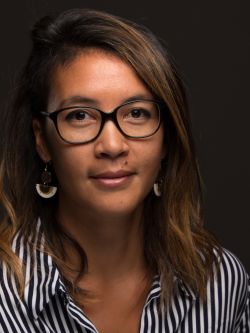Event Date/Time
Location
Room 222
Series/Event Type
Lightweight compliant surfaces are commonly used as roofs (awnings), filtration systems or propulsive appendages, that operate in a fluid environment. Their flexibility allows for shape to change in fluid flows, to better endure harsh or fluctuating conditions, or enhance flight performance of insect wings for example. The way the structure deforms is however key to fulfill its function, prompting the need for control levers. In this talk, we will consider two ways to tailor the deformation of surfaces in a flow, making use of the properties of origami (folded sheet) and kirigami (sheet with a network of cuts). Previous literature showed that the substructure of folds or cuts allows for sophisticated shape morphing, and produces tunable mechanical properties. We will discuss how those original features impact the way the structure interacts with a flow, through combined experiments and theory. We will notably show that a sheet with a symmetric cutting pattern can produce an asymmetric deformation, and study the underlying fluid-structure couplings to further program shape morphing through the cuts arrangement. We will also show that extreme shape reconfiguration through origami folding can cap fluid drag.
Speaker Bio
